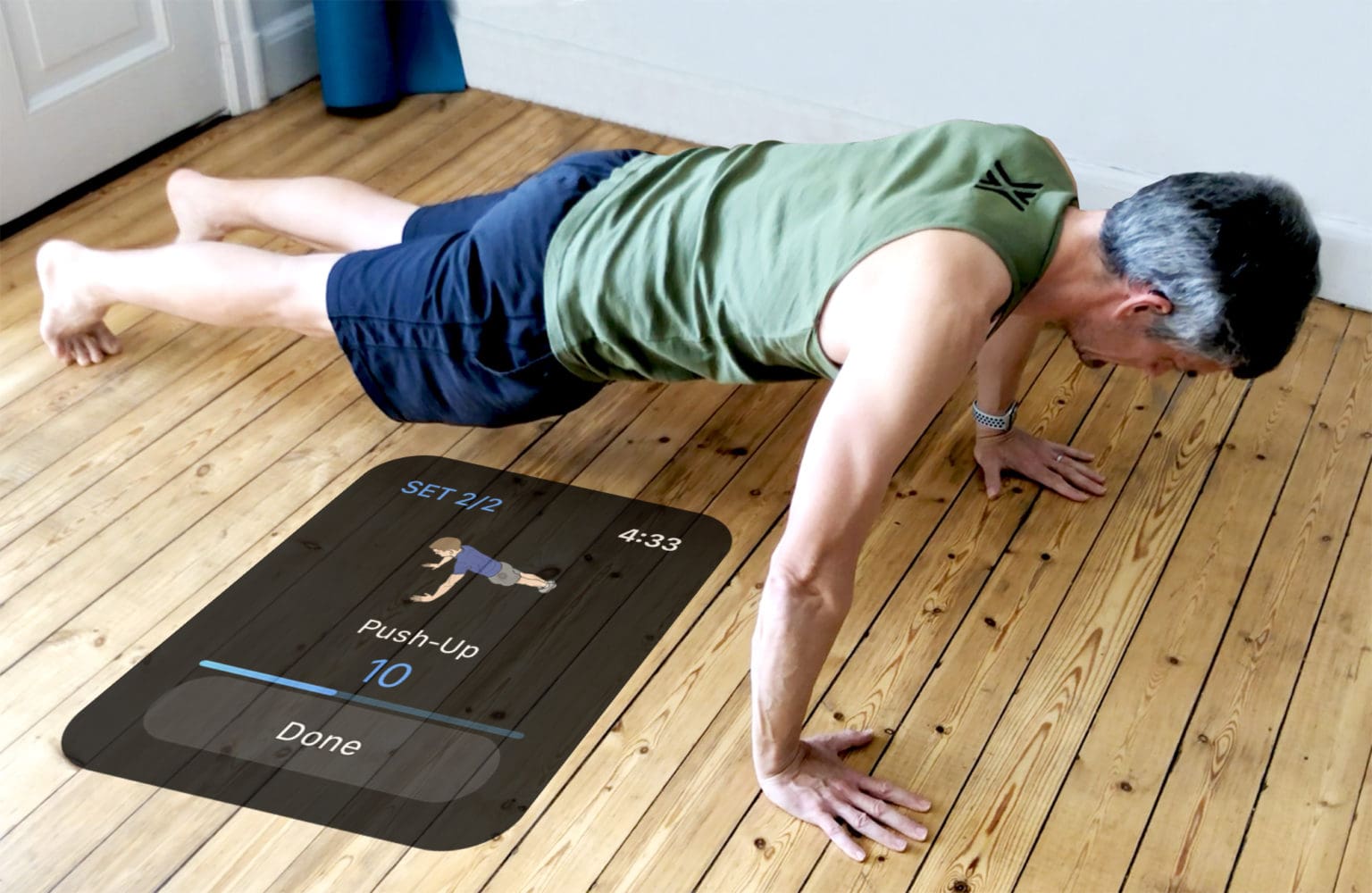The push-up is one of the world’s most hated exercises. In the movies, Marine Corps drill instructors shout: “Drop down and give me 40” as a punishment.
But the push-up doesn’t deserve its bad reputation. It’s actually a versatile, effective and enjoyable exercise. Better still, you can do it anywhere, anytime, without any special equipment. Which makes it an indispensable part of any quarantine home workout routine.
Here’s how your iPhone and Apple Watch can help you give your push-ups a push in the right direction.
Remember: Always check with your doctor before starting any new exercise activity. Don’t exercise if you feel any discomfort, nausea, dizziness or shortness of breath.
Why push-ups are a good thing
Push-ups are a bodyweight exercise, which means you use your own body as the weight, rather than pumping iron. That means they’re a true test of your strength-to-weight ratio. The heavier you are, the more strength you’ll need to push yourself up off the ground. So getting better at push-ups usually involves reducing your fat and increasing your muscle mass.
What muscles do they target?
Push-ups target four major muscle groups:
- Chest: Most of the work is done by your pectorals or “pecs,” making push-ups the ideal exercise if you want to build a bigger chest.
- Shoulders: Above your pecs are your anterior deltoids or “front delts.” These muscles work with your pecs whenever you push something. Well-defined front delts help accentuate your chest.
- Triceps: You extend your elbows when you push upward, which involves your triceps. Many people forget about these upper-arm muscles because they’re on the back of the arm, but triceps are just as important as the more-noticeable biceps.
- Abs: During push-ups, your core gets a workout because you must keep your abdominal muscles tight to keep your body straight.

Diagram: Graham Bower/Cult of Mac
How to do a standard push-up
To get into the start position, lie flat on the floor, face down, and place your hands palms-down directly below your shoulders. Push up with your arms while keeping your body aligned, so only your toes and hands are touching the ground and your arms are fully extended.
Lower yourself in a controlled motion until your upper arms are parallel with the ground and then push back up to the start position. Keep your core tight and your body aligned at all times. That’s one repetition or “rep.”
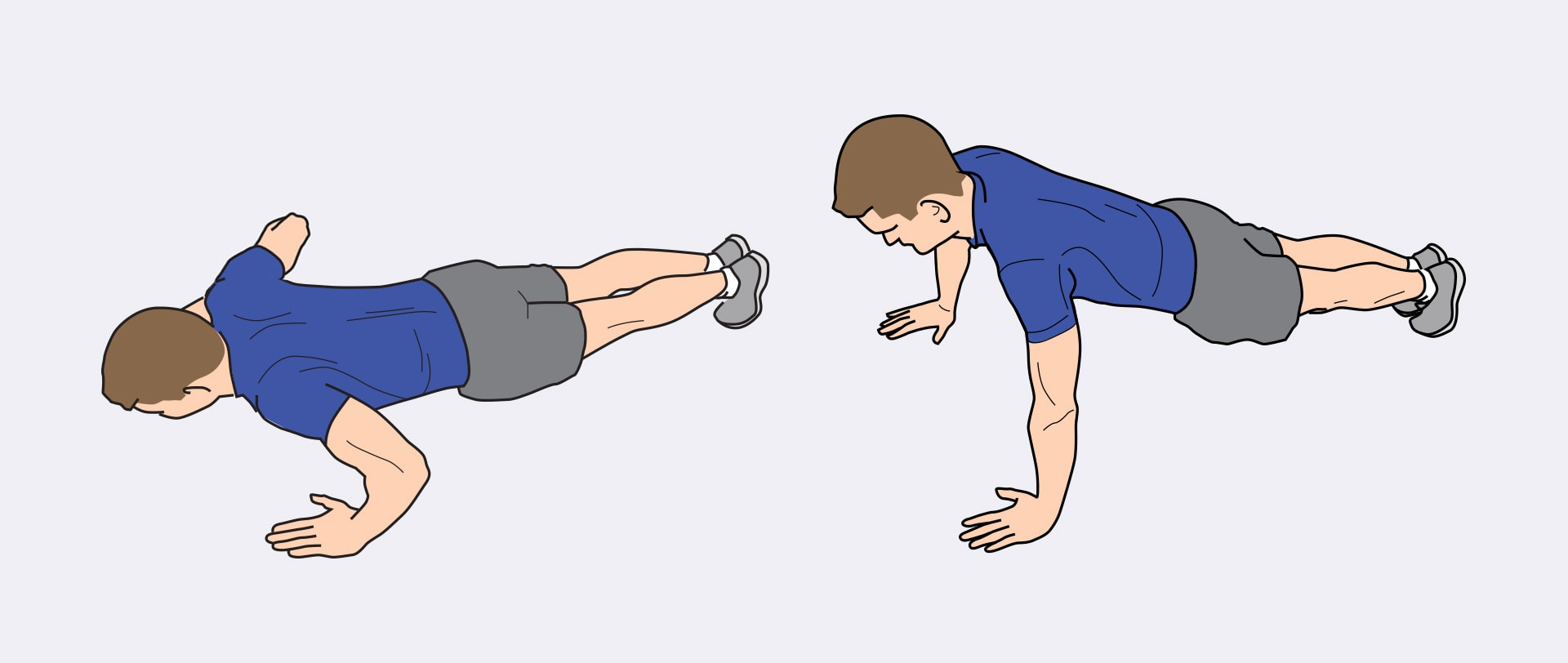
How to count reps automatically with your iPhone
If you want to log your push-ups automatically, there’s an app for that. 22 Push-ups is a free app that cleverly uses the camera in your iPhone to count your reps.
Using the app is simple. Just tap the play button, place your iPhone under your chest, and start doing push-ups. There are various different modes you can choose from. Select a target number of reps and a voice will count down toward your goal. Or you can work against the clock, or simply try to do as many push-ups as possible until you collapse in a sweaty heap.
When you’ve finished, you can save your workout to Apple’s Health app and share a video of your chest going up and down on social media. (If you really want to!)
The only issue I encountered using 22 Push-ups is that you have to lower your chest almost all the way to the ground in order for the app to register a rep. For some people, lowering this far might risk an injury. It very much depends on how stable and flexible your shoulders are. A good workaround I found was to move the phone so it’s under your belly rather than your chest. That way it registered the reps even if I didn’t go all the way to the floor.
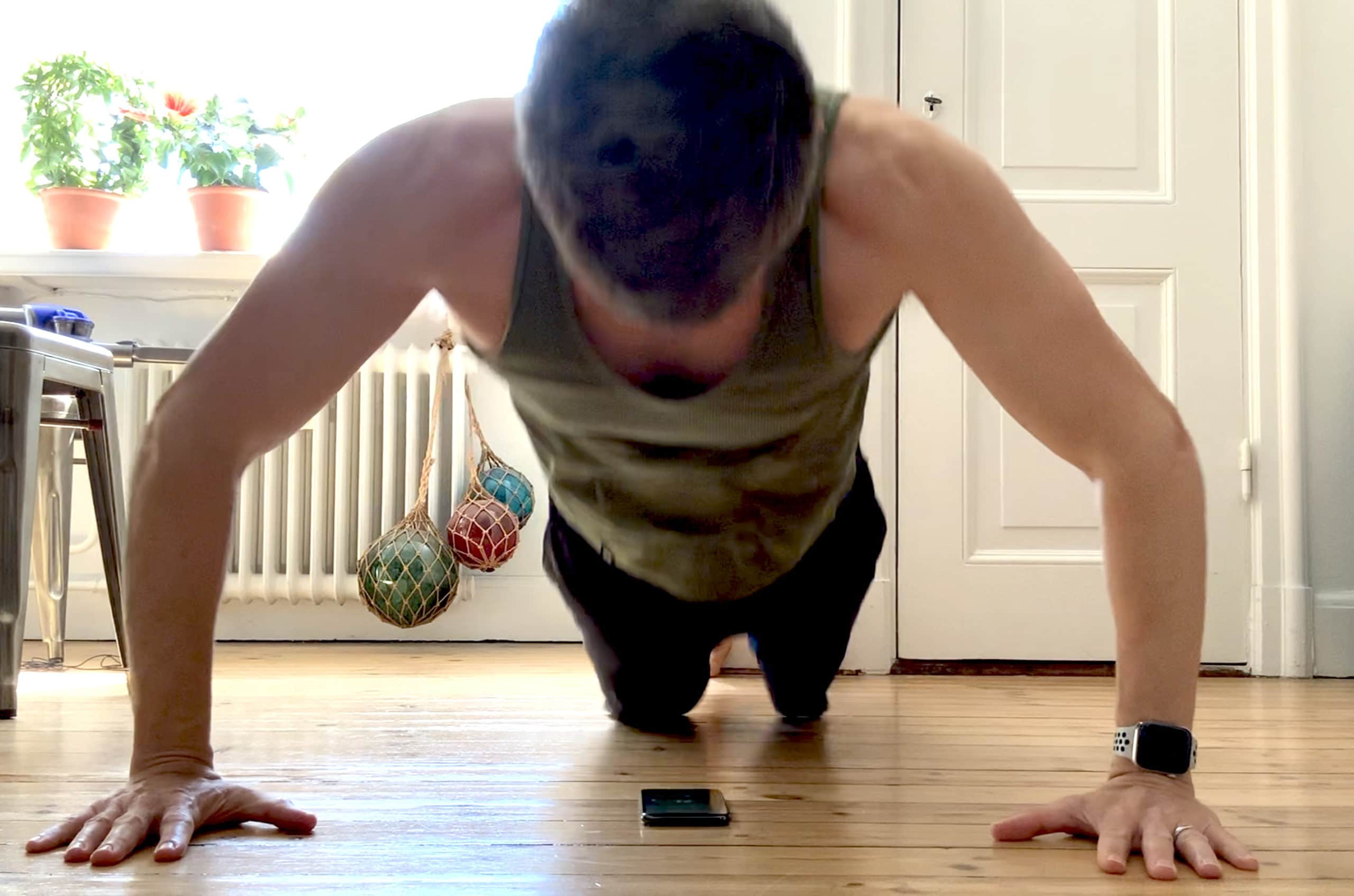
Photo: Graham Bower/Cult of Mac
How to log push-ups with Apple Watch
If you want to log your push-up progress over time, check out my app, Reps & Sets. (I develop it in my spare time as a hobby). It’s a free download for iPhone and Apple Watch.
Just set up a program with the number of push-ups you want to complete each day. The Watch app shows how many reps you should do and automatically times your rest intervals. When you’re done, you can save the workout to Apple’s Health app. And if you get bored with standard push-ups, Reps & Sets includes instructions on plenty of variants you can try.
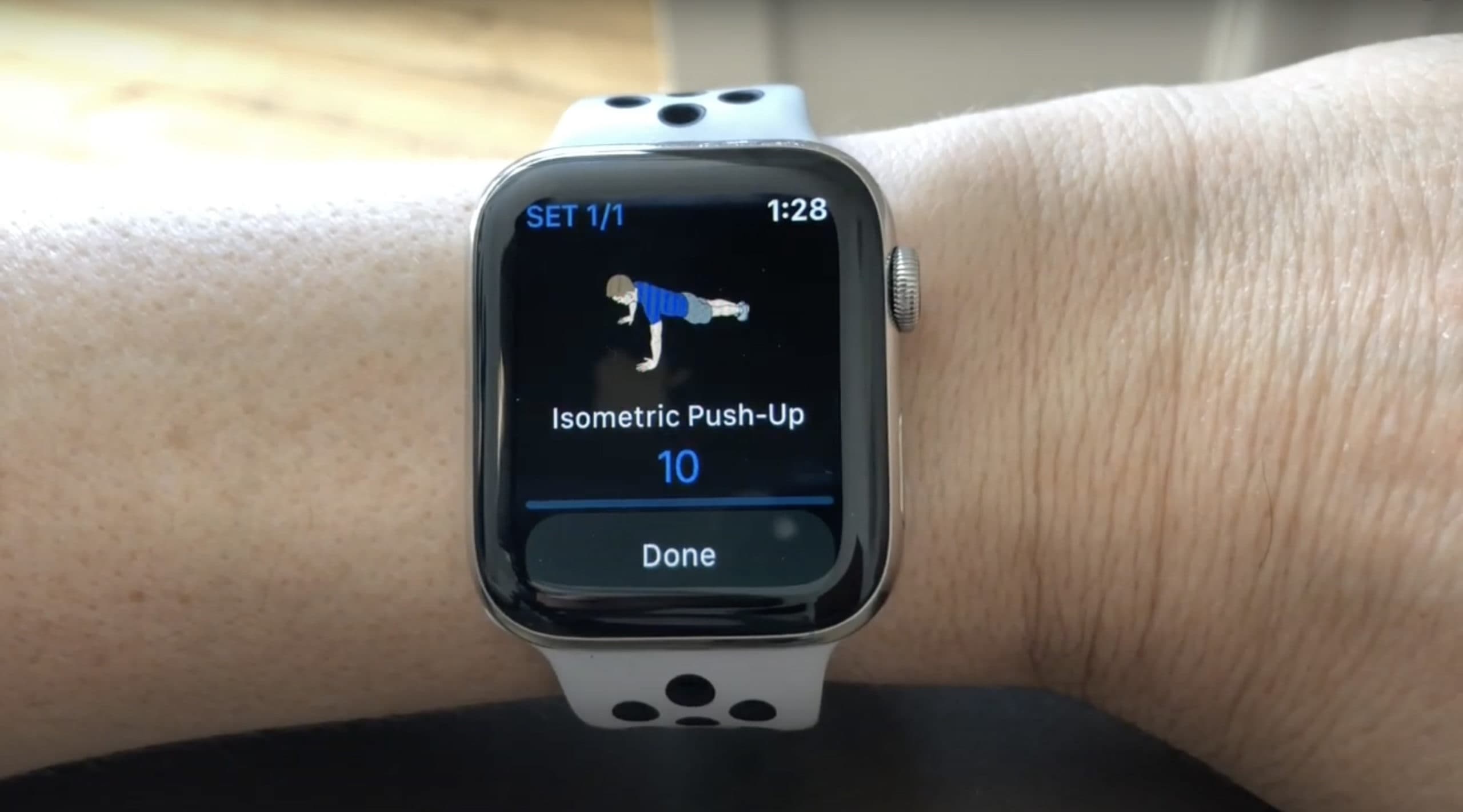
Photo: Graham Bower/Cult of Mac
What if you can’t do a single push-up?
Push-ups require a lot of physical strength. If you‘re struggling to do them, try half push-ups instead. These are just the same as regular push-ups, except you keep your knees on the floor. By keeping more of your body on the floor, there’s less weight to lift, making this an easier variant.
If you find half push-ups are also too hard, you can try wall push-ups instead. Stand facing a wall, a couple of feet away from it. Place your hands on the wall at shoulder height. Then slowly lean toward the wall by bending your elbows, while keeping your body straight. Then push back to the upright position.
As you build your strength, you can progress from wall push-ups to half push-ups and from half push-ups to full push-ups.
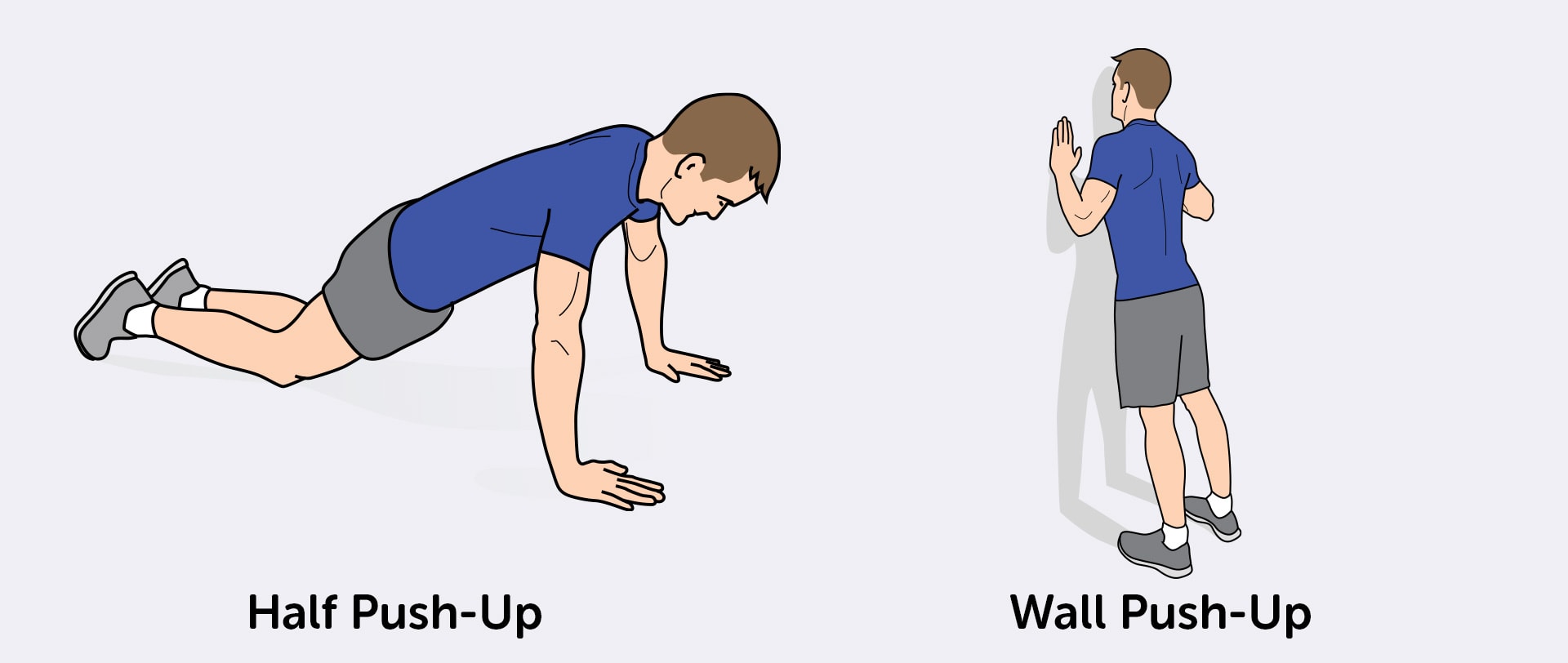
Diagram: Graham Bower/Cult of Mac
How to make push-ups harder
If you find push-ups easy, there are plenty of variants you could try instead.
You can target different parts of your chest with incline push-ups and decline push-ups. These are just the same as regular push-ups, except you use a stool or a chair to support your hands (for incline push-ups) or feet (for decline push-ups). The incline push-up targets your lower chest, while the decline push-up targets your upper chest.
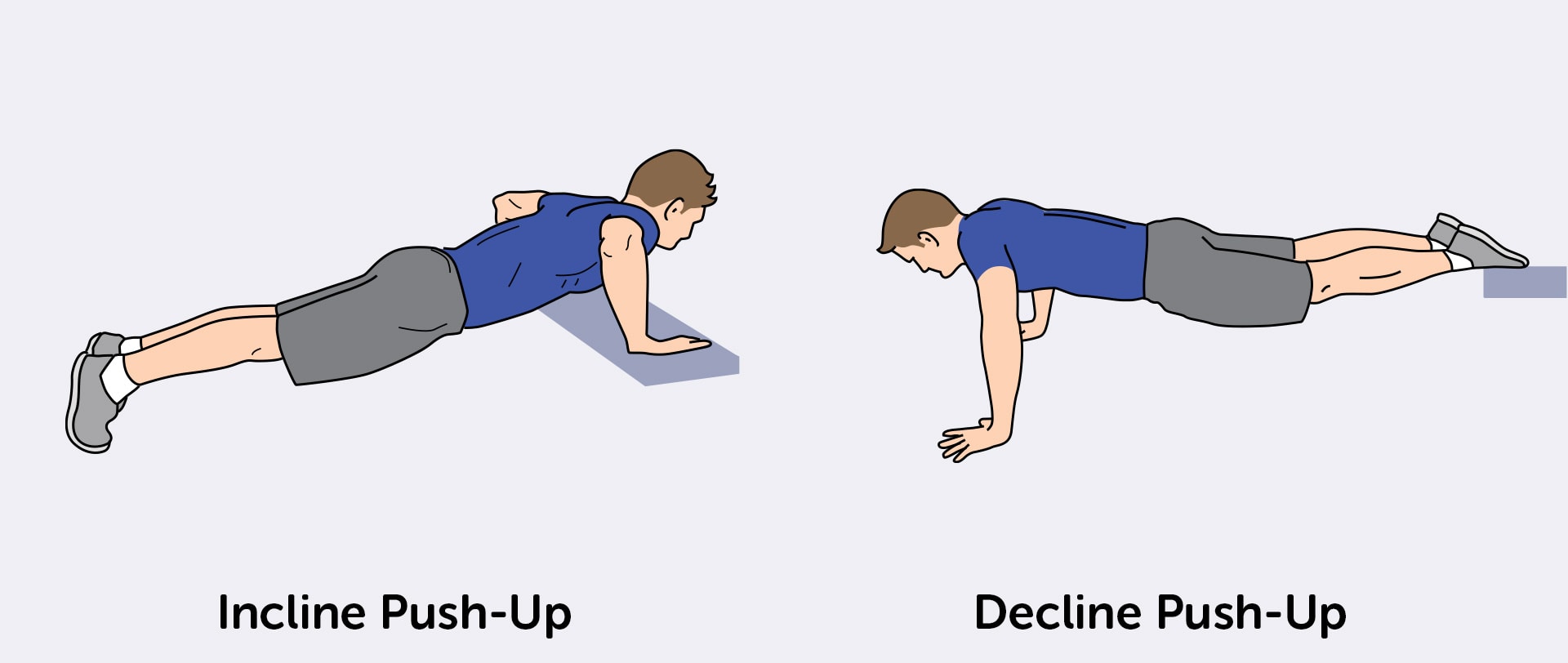
Diagram: Graham Bower/Cult of Mac
Push your fitness to new levels
The world record for the most push-ups nonstop stands at a staggering 10,507. My own personal record is a paltry 55. But during the COVID-19 lockdown, I’ve been slowly increasing that number with daily practice. And I’m determined to reach 100 one day.
Whatever your current fitness level, push-ups provide a quick and easy way to build your strength and stamina while you’re stuck indoors. So what are you waiting for? Drop down and give me 40!
More push-ups resources
For ideas on how to integrate push-ups into a whole-body workout, check out our CultFit Home Workout.
